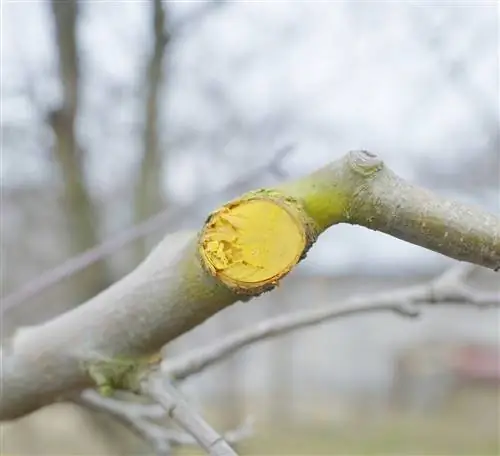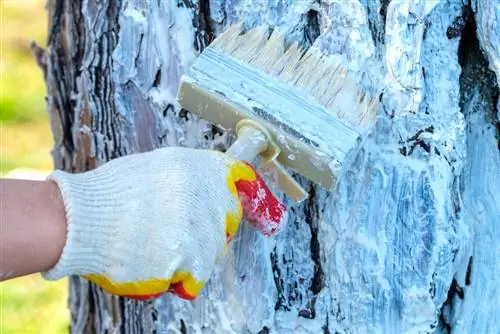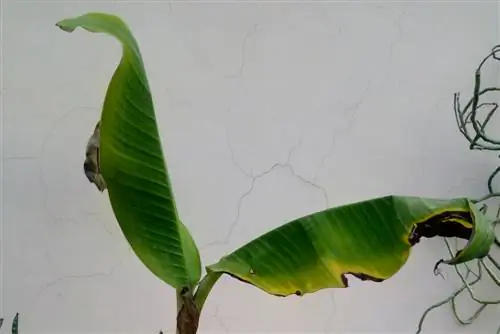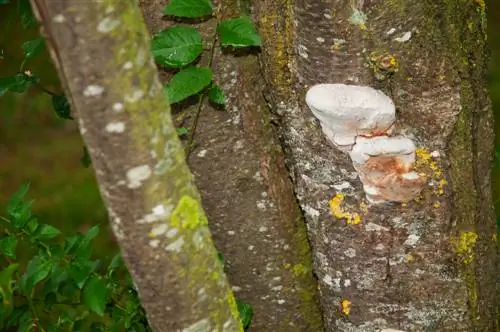- Author admin [email protected].
- Public 2023-12-16 16:46.
- Last modified 2025-01-23 11:21.
Especially after a more extensive pruning, the trunk of a tree can suffer larger wounds, for example if a large branch was removed directly at the base. But the tree trunk can also suffer injuries from animal bites, after a storm or from wet, heavy snow. Fungi and other pathogens can penetrate through these wounds and cause damage to the tree.
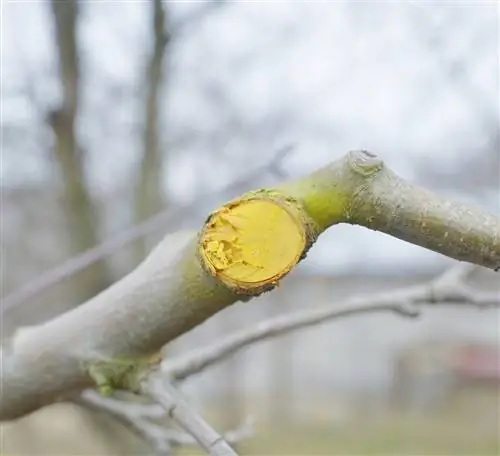
How to treat an injured tree trunk?
To treat a tree trunk after injuries, small wounds should remain dry to allow the tree to heal naturally. For larger wounds or chipped bark, wound closure agents such as tree wax, lac balm or resin-wax mixture can be carefully applied, with cleanliness and hygiene being important.
Wound closure agent yes or no?
To counteract this danger, it is advisable to apply a wound closure agent. However, the experts do not agree on whether it makes sense to use it: some consider tree wax etc. to be very useful, while others cite studies that even show that trees treated with wound closure agents are more susceptible to the penetration of fungi and bacteria. Depending on the weather, the paint would crack or even the bark would peel off. Experience has shown that you should actually leave smaller wounds dry and otherwise alone - this is where the tree can use its own wound healing power. However, larger open wound areas require treatment in order to support the self-healing powers. The products can also be used in the event of cuts caused by winter pruning or in the case of chipped bark.
How to apply the wound closure product correctly
You can use tree wax (€13.00 on Amazon), for example, as a wound closure agent, but also Lac Balsam or a resin-wax mixture. Only use products with the test seal of the Federal Biological Institute. Apply this as follows:
- Clean the wound carefully from dirt etc.
- Cut as straight a surface as possible.
- Use sharp and freshly infected tools.
- Otherwise you will introduce germs into the wound yourself.
- Do not cover the entire wound with the wound closure.
- It is usually enough to just treat the edge.
Be sure to pay attention to cleanliness and hygiene when doing this work. If possible, wear disposable gloves and do not touch the wound with your bare fingers.
Tip
Especially after a winter storm, severe breakage can occur, meaning the tree can essentially no longer be saved. However, you do not have to dispose of it, but - after appropriate treatment - use it for various construction projects.

